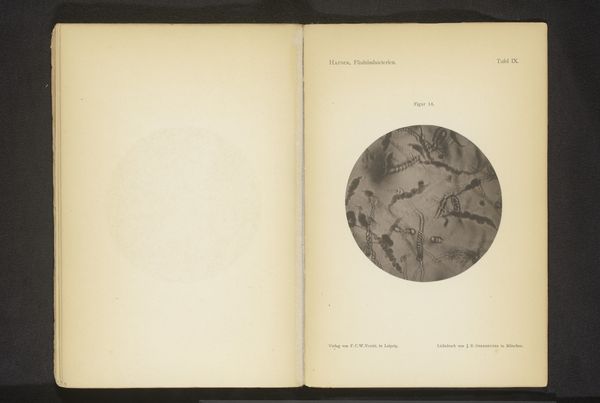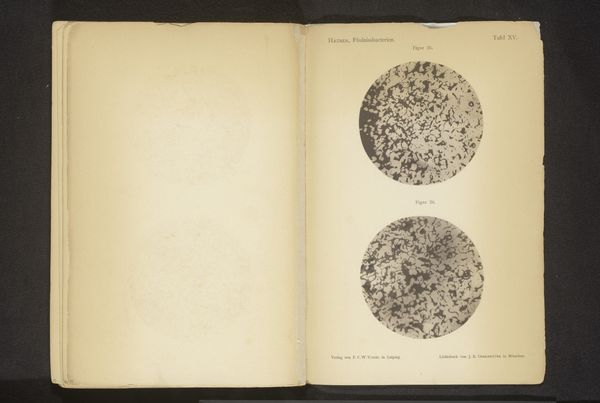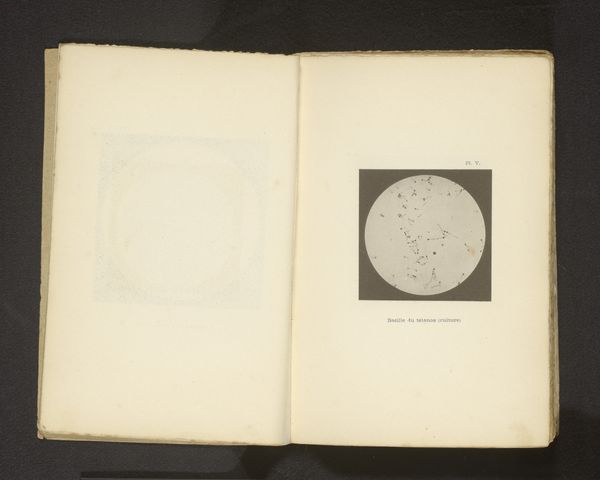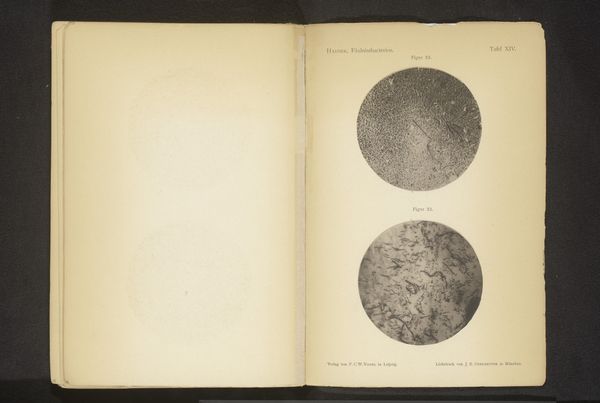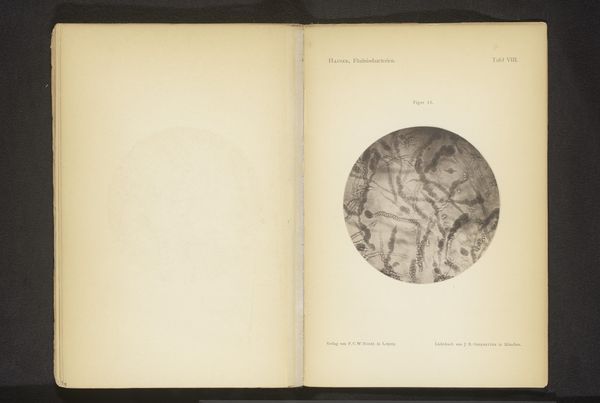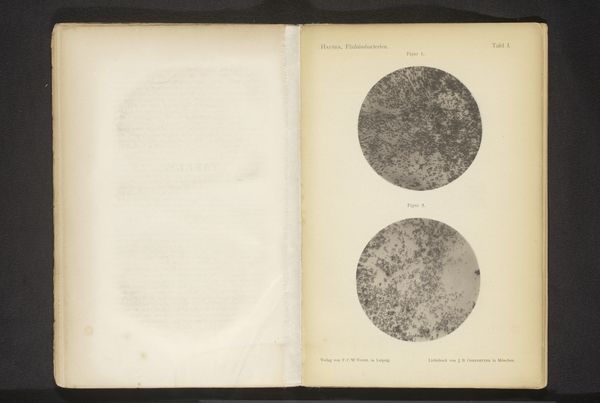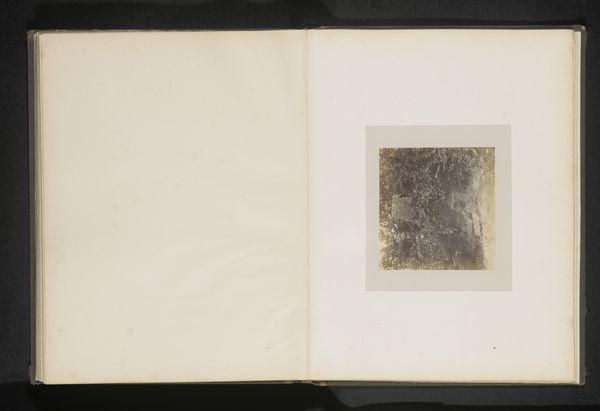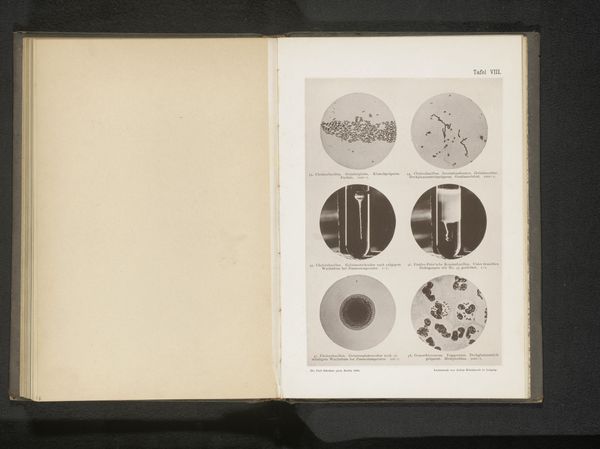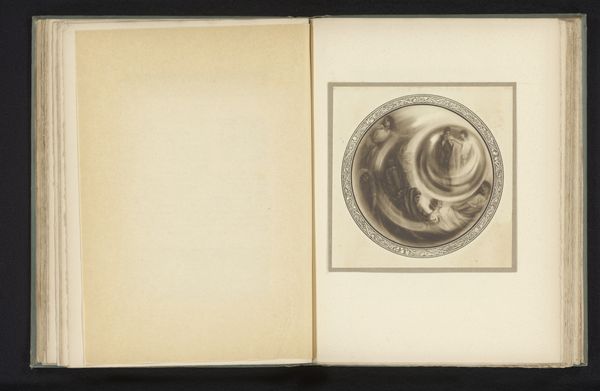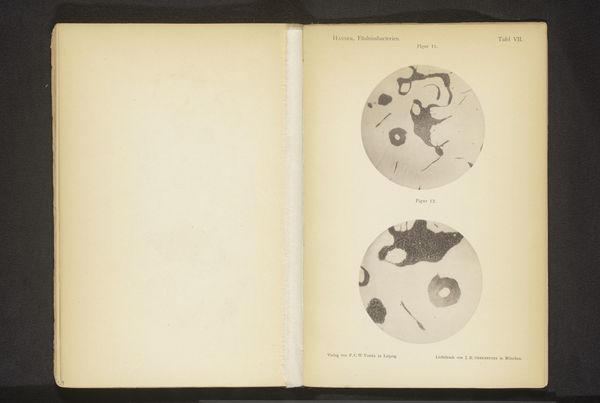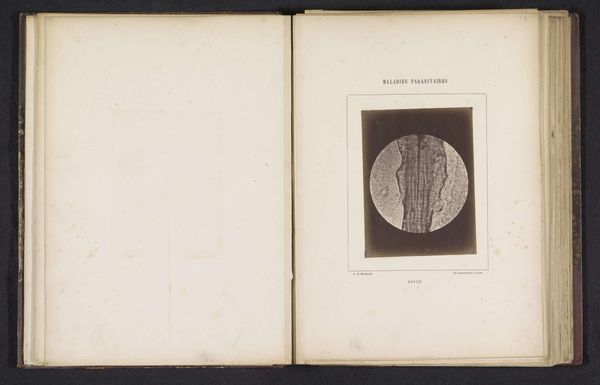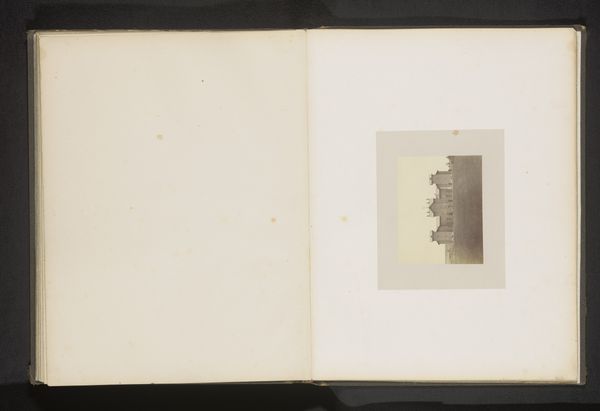
print, photography
#
aged paper
# print
#
photography
Dimensions: height 72 mm, width 72 mm
Copyright: Rijks Museum: Open Domain
Curator: At first glance, it's evocative—like looking into the cosmos through an antiquated lens. What do you think? Editor: Yes, an odd and eerie beauty, and the composition is surprisingly modern. Curator: Well, what you’re looking at is a photographic print of a microscopic image titled “Microscoopopname van de skeletnaald van een zeekomkommer” or, in English, "Microscopic image of the skeletal needle of a sea cucumber." We attribute it to an anonymous creator before 1899. Editor: Fascinating. The labor involved must have been immense. Early photography required not only technical skill, but also considerable financial investment in equipment and materials, which speaks volumes about who had access to such resources. How did this imagery of microscopic sea life infiltrate broader culture? Curator: That’s a keen question. Its presence likely signaled an expanding culture of scientific observation—the Victorian era's fascination with natural history intertwined with new visual technologies. Remember those cabinet cards featuring insect collections? Editor: True. And how these images shaped public perceptions of science itself. Did they create a sense of wonder, a detachment, or perhaps a touch of the uncanny? Curator: Potentially all three, simultaneously. Its inclusion within a bound publication shows how visual knowledge was disseminated through established networks. It speaks to institutional power and cultural trends shaping the viewing and making of art. Editor: Absolutely. What strikes me is that a relatively simple form – the needle-like structure of a sea cucumber's skeleton – transforms into something akin to abstract art when magnified. Its organic spirals echo naturally forming structures that underpin our perception. Curator: Right, a meeting of the organic and mechanical through craft and materials that allows us to engage directly with nature's fundamental elements. Editor: A tangible relic that, in turn, underscores the intertwined nature of art, science, and historical progress. Curator: I think it underscores our limited access to some crucial art processes, and that can lead us to better consider labor and class issues related to creating and understanding art. Editor: It is indeed, still a reminder of the myriad perspectives history affords us, when properly magnified.
Comments
No comments
Be the first to comment and join the conversation on the ultimate creative platform.
